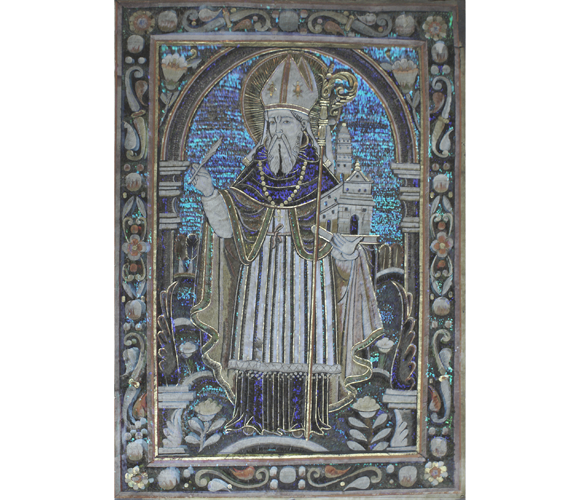Ancient Styles in the New Era

Ancient techniques and materials were adapted to the creation of exquisite Christian objects in colonial times. How these objects were interpreted by their indigenous makers and audiences, however, is a more complex question with which scholars continue to grapple.
This section of the exhibition, for example, includes several Andean textiles that were repurposed or transformed to dress statues of Christ or saints, suggesting that its link to ancient forms of ritual imbued the material itself with value for Andean society.
In the early years of evangelization in Mexico, the mendicant orders encouraged the use of feathers (endowed with sacred meaning since preconquest times and associated with the Aztec patron deity Huitzilopochtli) to create religious objects, including feather paintings with Christian subjects. The iridescence of the materials and the skill with which they were applied captured the imaginations of Europeans. In describing the gifts sent by Hernán Cortés to King Charles V, a Spanish chronicler noted that the king marveled at how "brilliantly the use of feathers replaced that of the brush."
The adaptation of printed Christian images to the precious featherwork of the Aztecs was more than an exercise in copying and translating an image from one artistic medium into another. The sacredness of feathers became associated with Christian forms of veneration, and they were used to adorn triumphal arches, the bases of crosses, monstrances containing the sacred host, and the litters and canopies (palios) in which the host was carried during the Corpus Christi festival.
Exhibition Home Page The Andean Uncu
Image: Saint Augustine, Mexico, 17th century; feathers and paper on copper; 16 1/2 x 11 3/5 in. (42 x 29.5 cm); Collection Daniel Liebsohn, Mexico City; Photo Rony Liebsohn.